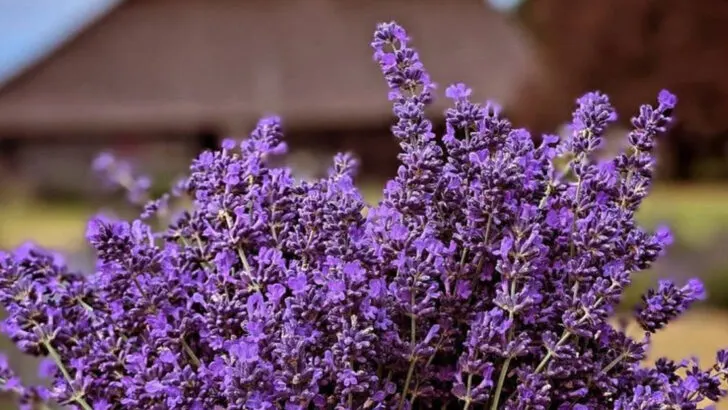Some flowers don’t just bloom—they burst onto the scene like they’re putting on a Fourth of July show just for you. Vibrant petals, explosive colors, wild shapes—they make your garden feel like it’s celebrating something every single day. These are the blooms that steal the spotlight, catch the sunlight just right, and leave you doing double takes from your kitchen window. They’re bold, they’re joyful, and yes—they feel like botanical fireworks.
And then there are the bee magnets—those magical flowers that hum with life from morning to night. You don’t need to install a pollinator hotel or sprinkle sugar water; just plant one of these and bam, your garden turns into a buzzing summer café. The best part? Many of these showy or sweet-scented flowers pull double duty: they dazzle your eyes and support the bees—a win for your garden and the planet.
Whether you’re planting for drama, pollinators, or both, this list has your back. These 18 blooms are pure summer energy—no fuss, just fireworks and friendly buzz.
Allium
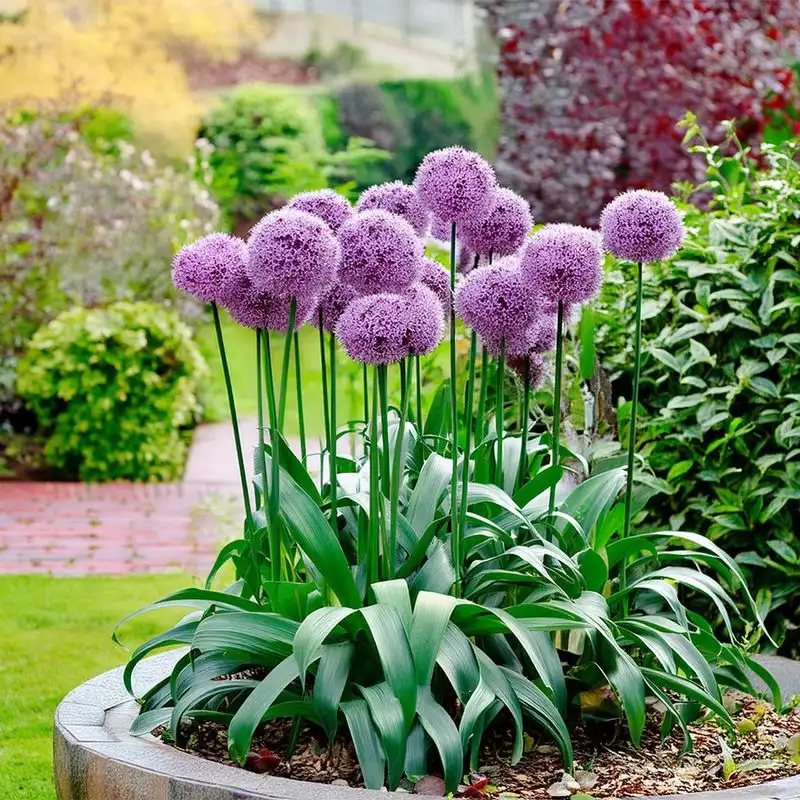
Purple spheres bursting with life, alliums are the silent fireworks of the garden. Their rounded clusters of tiny flowers create a spectacle that lasts for weeks. Adding a touch of whimsy, they stand tall, swaying gently with the breeze, making them a lively backdrop for any floral display. Originating from Central Asia, these bulbs are as sturdy as they are stunning, requiring minimal care once planted. Their onion-like scent deters pests, allowing them to thrive without interference. Perfect for garden borders, these blooms draw the eye with their unique shape and vibrant hue.
Liatris
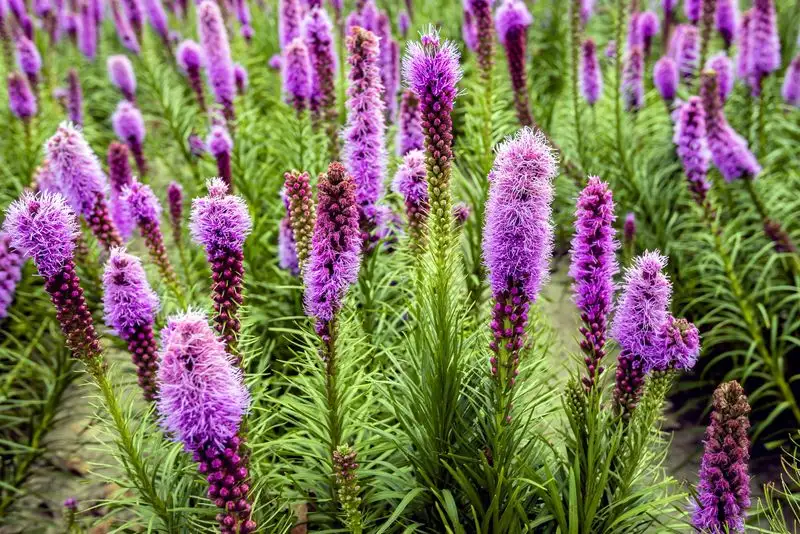
With a vertical explosion of pink and purple spikes, liatris stands tall in any garden, mimicking the upward burst of a firework. Known also as blazing star, it captivates with its unusual form and radiant color. These perennials attract butterflies and pollinators, adding lively movement to the spectacle. Preferring full sunlight, liatris thrives in well-drained soil, requiring little beyond the basics to flourish. Originally a prairie plant, it’s both drought-tolerant and resilient, making it a versatile choice for different climates. Their tall, slender form is perfect for adding height and drama.
Crocosmia
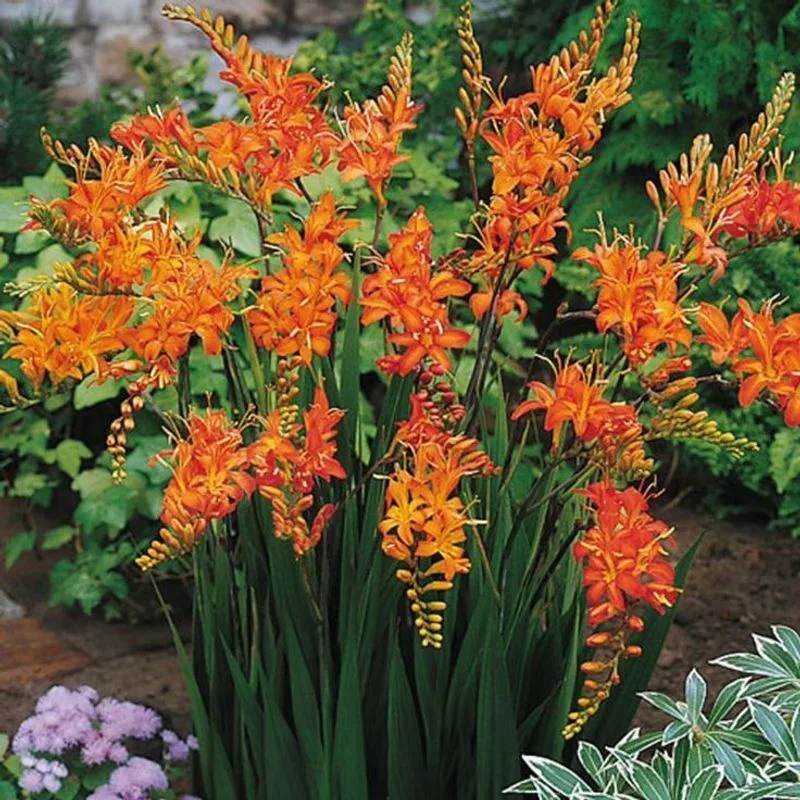
The vibrant oranges and reds of crocosmia give gardens a fervent energy, reminiscent of sparklers on a summer night. These tubular blooms blaze in the sunlight, creating a showy display that captures attention instantly. Native to South Africa, they prefer sunny spots and well-drained soil. Not just a feast for the eyes, crocosmia also attracts hummingbirds, making them an ecological favorite. Despite their exotic look, they are surprisingly hardy, withstanding various weather conditions with ease. Their fiery blooms make any garden feel more alive and dynamic.
Echinacea
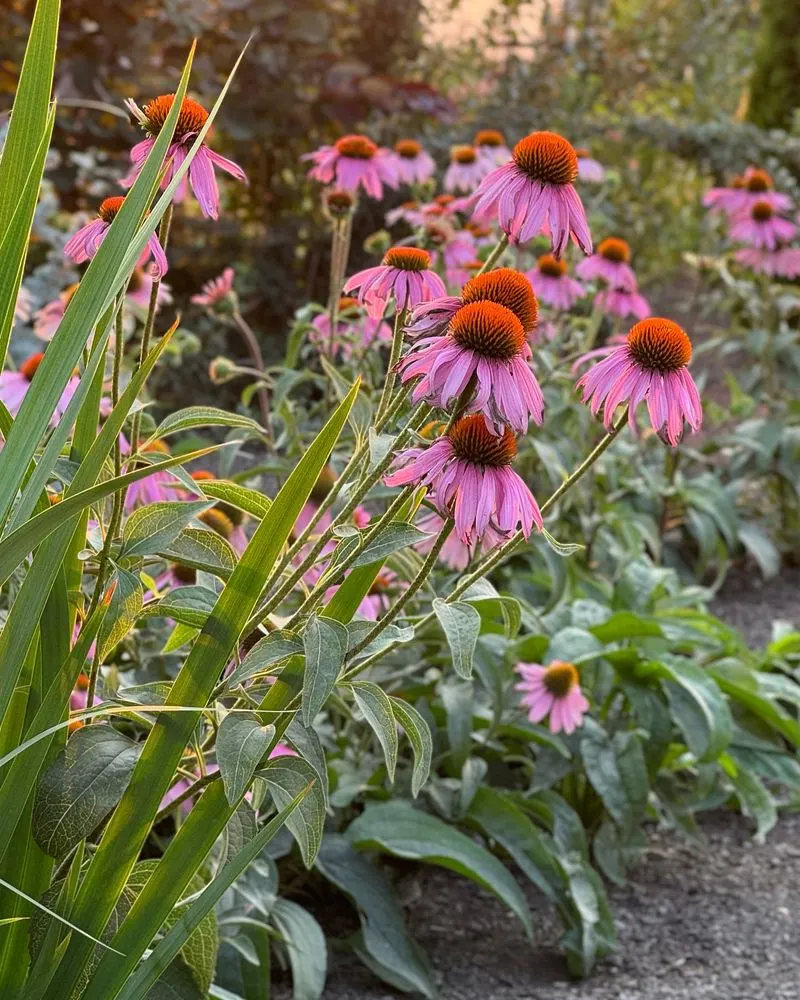
Echinacea, with its bold, cone-shaped centers and drooping petals, resembles a flower in mid-burst. These resilient perennials are more than just a pretty face; they’re also known for their medicinal properties. Native to North America, they thrive in a variety of climates, making them a versatile addition to any garden. Their bright pink and purple hues attract butterflies and bees, contributing to a lively, buzzing ecosystem. Easy to cultivate, echinacea prefers well-drained soil and full sun. Their vibrant colors and unique shapes make them a standout feature in any outdoor space.
Dahlia
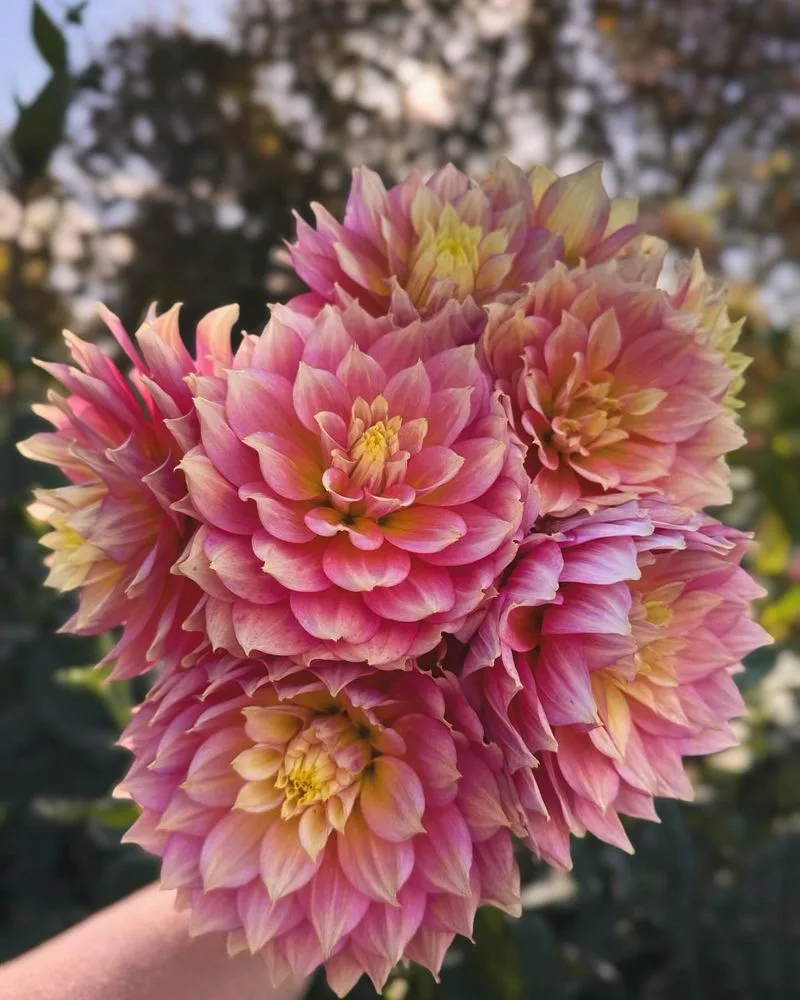
Dahlias are the fireworks of the floral world, with their elaborate, multi-layered petals that seem to explode in every direction. Each bloom is a masterpiece of color and form, ranging from bold reds to sunny yellows and delicate pinks. Originally from Mexico, dahlias thrive in rich, well-drained soil and require regular watering. Their stunning appearance makes them a favorite for floral arrangements, both in gardens and in vases. Despite their delicate looks, they’re quite robust, blooming from mid-summer to the first frost. Their diverse forms and vibrant colors make them unforgettable.
Kniphofia
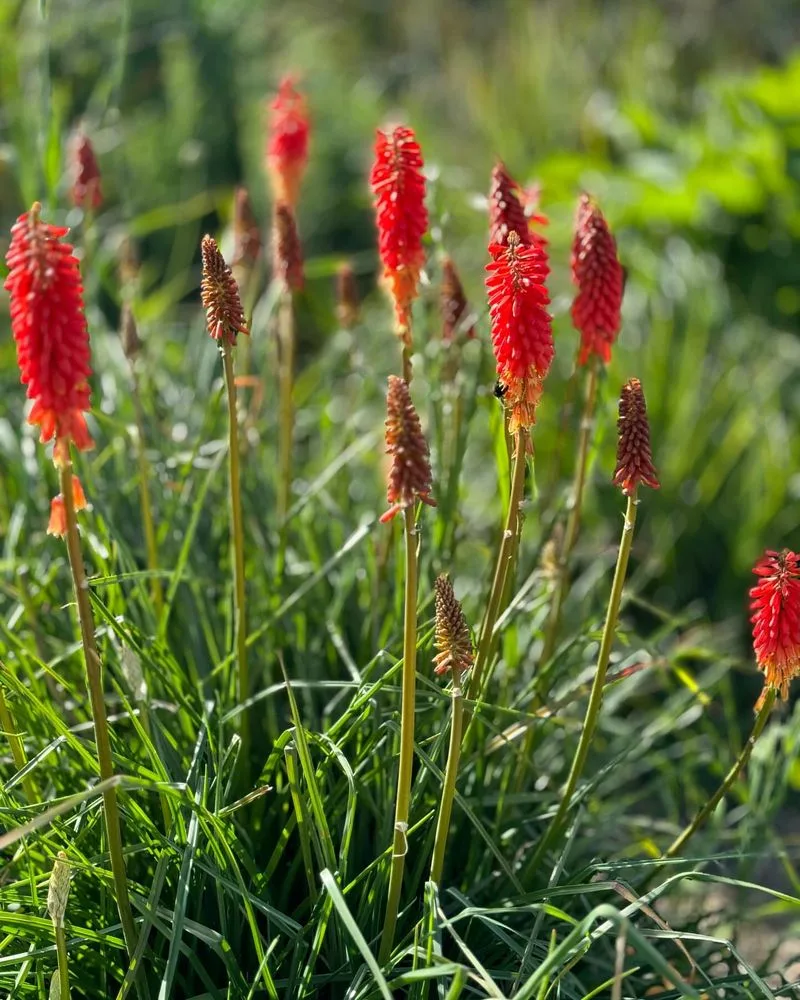
Kniphofia, also known as red hot poker, brings a fiery flair to any garden. With its tall, torch-like blooms in vivid reds and yellows, it mimics the appearance of a rocket firework. These South African natives thrive in sunny spots with well-drained soil, attracting birds and pollinators alike. While their exotic appearance suggests otherwise, they’re surprisingly easy to grow and maintain. Their striking form and vibrant colors make kniphofia a bold statement piece in any landscape. An excellent choice for adding vertical interest and a splash of color.
Verbena bonariensis
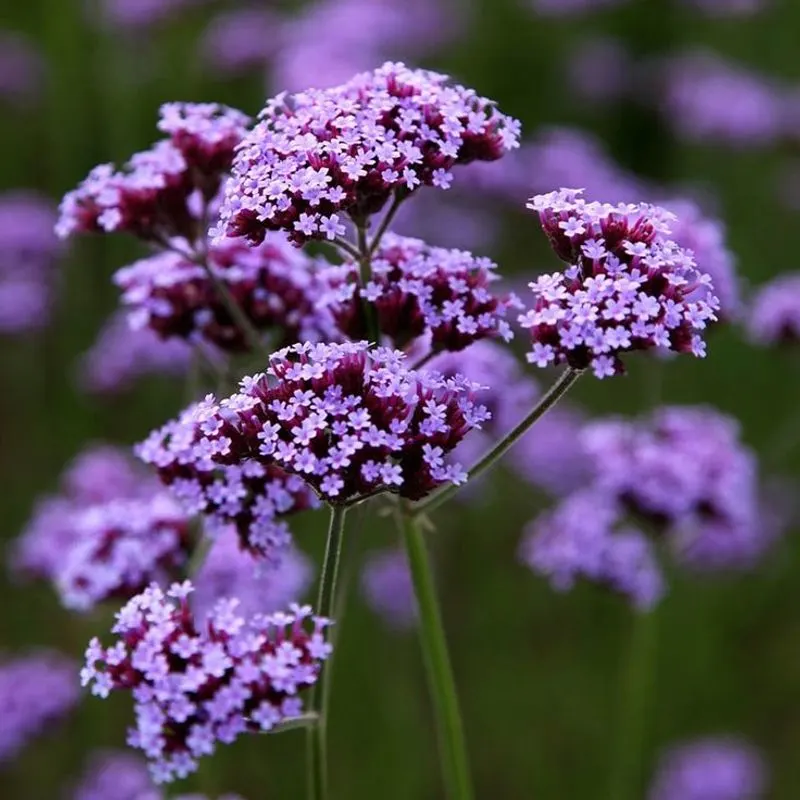
Verbena bonariensis captivates with its airy clusters of small purple flowers perched atop tall, slender stems. Resembling a sky full of colorful bursts, this plant adds a touch of grace and elegance to any garden. Native to South America, it’s a favorite for attracting butterflies and bees. Despite its delicate appearance, it’s a resilient perennial that thrives in sunny conditions and well-drained soil. Its open, transparent structure allows it to blend seamlessly with other plants. Verbena bonariensis provides not only visual interest but also supports a vibrant ecosystem.
Canna
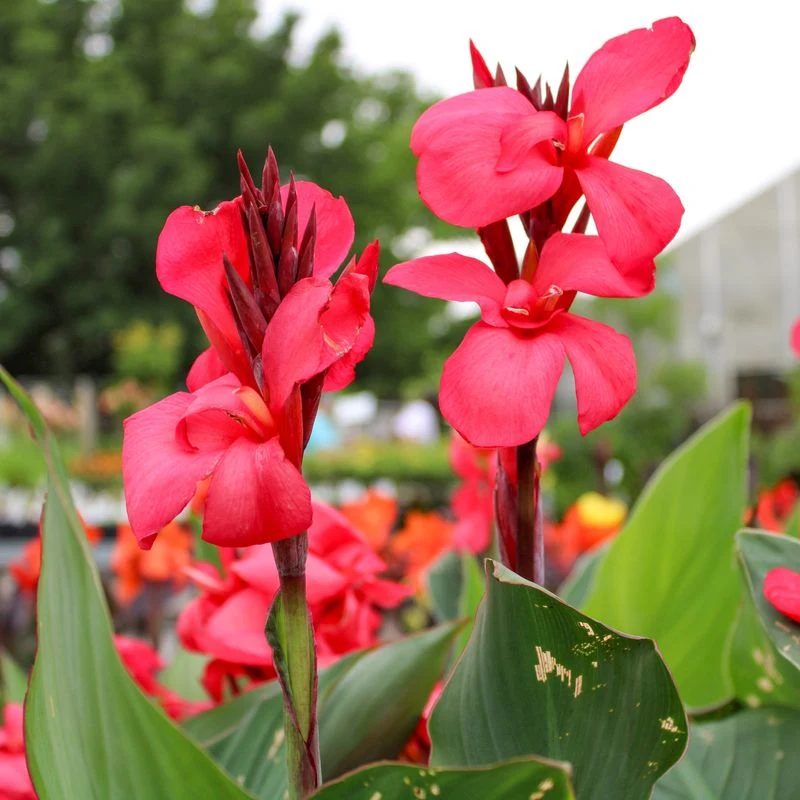
Canna lilies, with their large, bold flowers and lush foliage, bring a tropical flair to gardens. Their vibrant reds, oranges, and yellows resemble the colorful bursts of fireworks. Native to tropical regions, they thrive in warm, sunny locations with well-drained soil. Cannas are not just visually striking; they also attract hummingbirds, adding dynamic movement to the garden. Despite their exotic look, they’re surprisingly easy to care for, requiring regular watering and occasional feeding. Perfect for adding a tropical touch to garden beds or as a statement in containers.
Astilbe
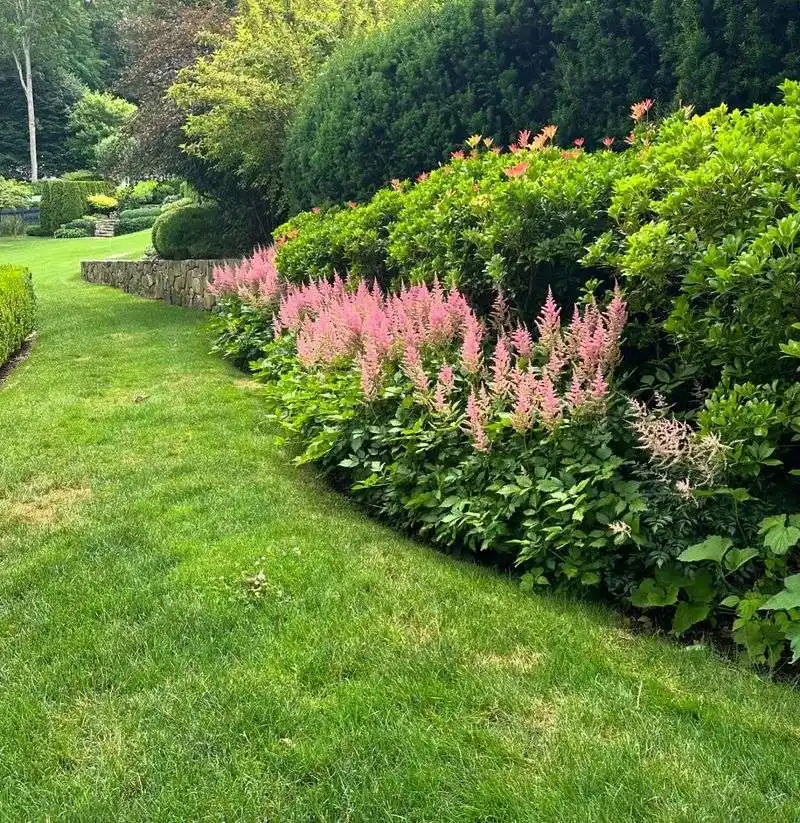
Astilbe offers a subtle yet stunning display, with its fluffy, plume-like flowers that sway gently in the breeze. These perennials bring a soft, ethereal quality to gardens, reminiscent of the gentle cascade of a firework’s glow. Preferring shady spots and moist soil, astilbe thrives in areas others might not, offering beauty in unexpected places. Their pastel colors attract bees and butterflies, contributing to a thriving ecosystem. Easy to care for, astilbe requires minimal maintenance, making it an ideal choice for gardeners of all levels.
Bee Balm
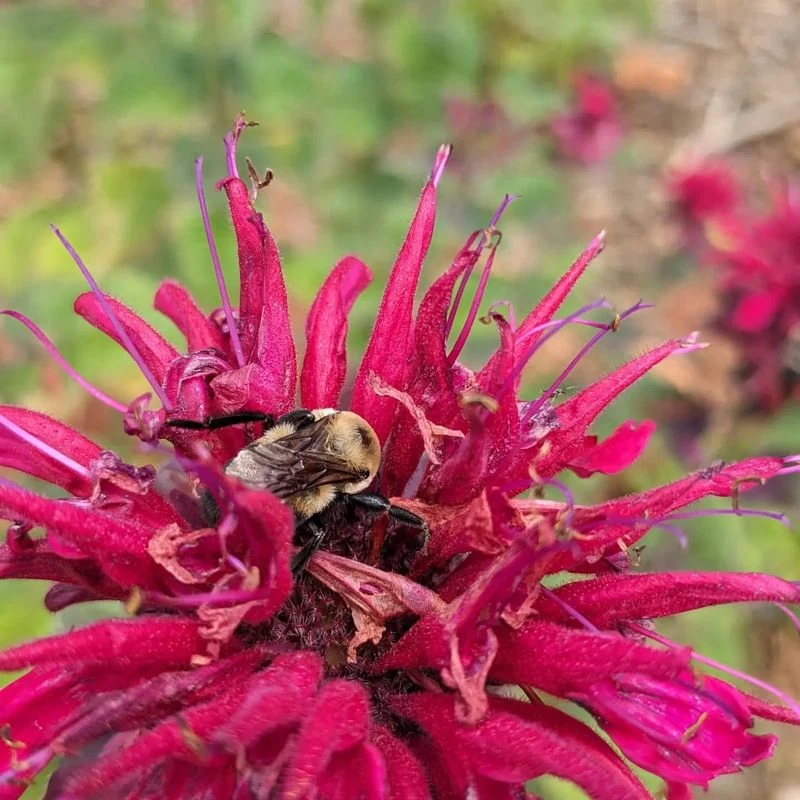
Bee balm is a vibrant addition to any garden, with its tubular blossoms in shades of red and pink. This perennial not only adds a pop of color but is a magnet for bees, butterflies, and hummingbirds. Native to North America, bee balm thrives in sunny locations with well-drained soil. It’s known for its aromatic foliage, which can be used in teas and potpourris. Despite its delicate appearance, bee balm is quite hardy and resistant to common garden pests. Its vibrant presence and ecological benefits make it a garden favorite.
Lavender
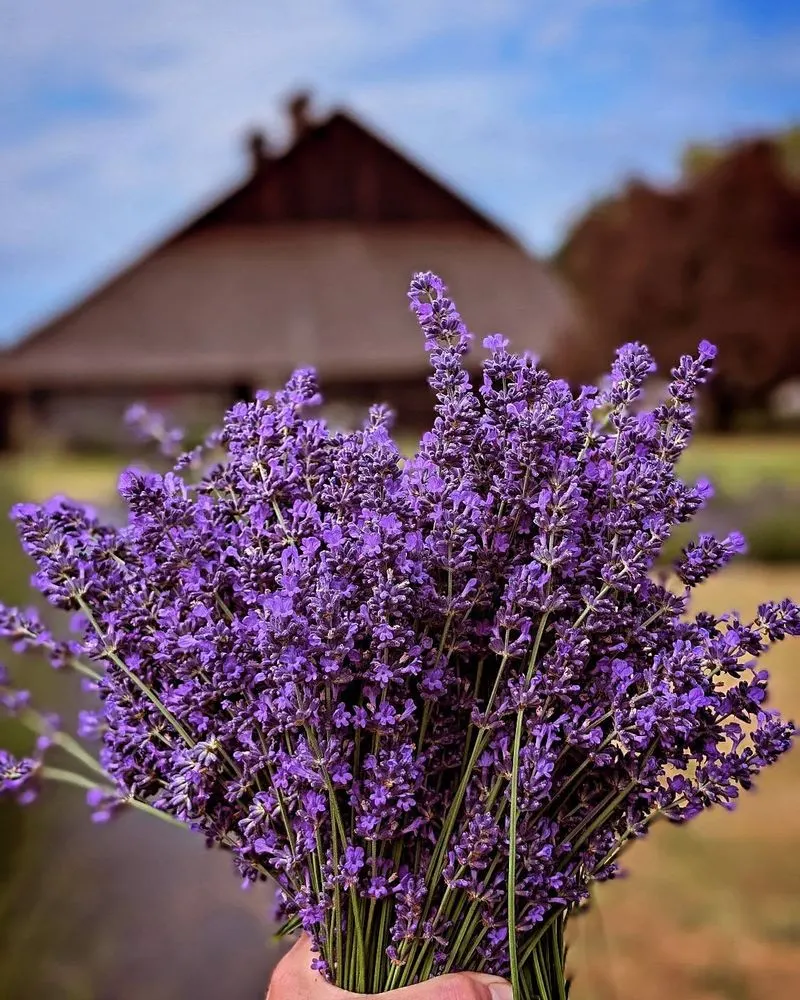
Lavender is synonymous with tranquility, with its soothing purple hues and calming scent. This perennial is not only a delight for the senses but also a favorite among bees, making it a staple in pollinator-friendly gardens. Originating from the Mediterranean, lavender thrives in sunny, well-drained spots. Its versatility extends beyond the garden, as its dried flowers are used in sachets and oils. Easy to maintain, lavender requires minimal watering once established. Its aromatic blooms and ecological advantages make it an essential addition to any backyard.
Sunflower
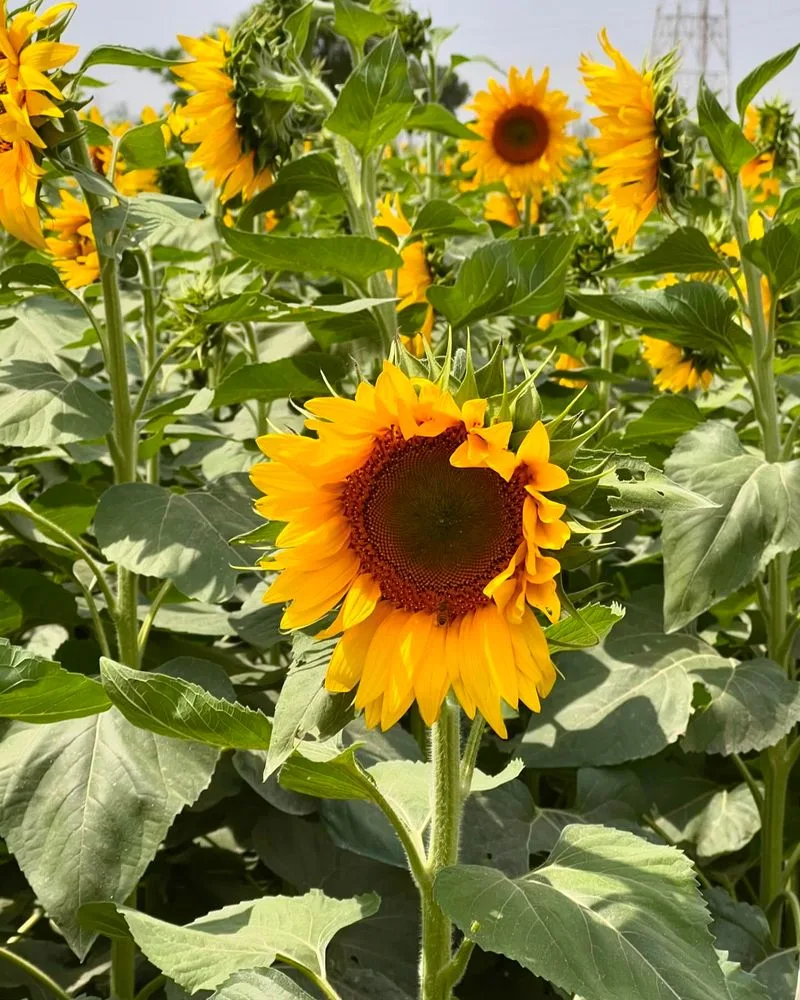
Sunflowers are the giants of the garden, with their towering stems and massive blooms that follow the sun’s path. These annuals are more than just a cheerful sight; they’re a hub of activity for bees. Native to North America, sunflowers thrive in sunny locations with well-drained soil. Their seeds are a favorite for birds, adding another layer of life to your garden. Despite their size, sunflowers are easy to grow, requiring little more than sunlight and water. Their imposing stature and vibrant petals make them a standout feature.
Borage
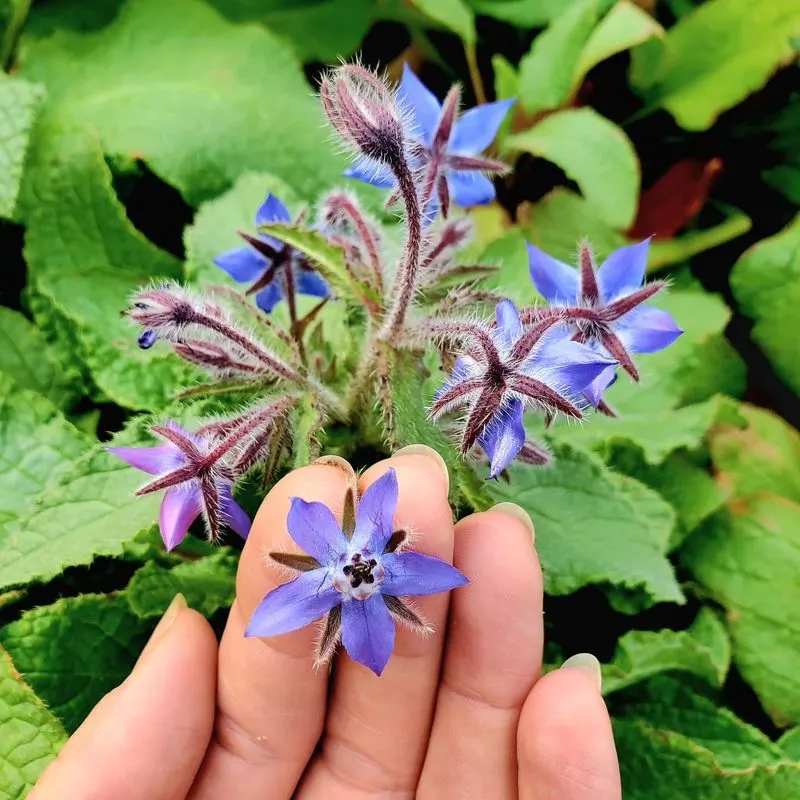
Borage, with its vivid blue, star-shaped blooms, is a magnet for bees. This herb not only adds a splash of color but also enriches the garden with its ecological benefits. Native to the Mediterranean, it prefers sunny locations and well-drained soil. Borage is known for its edible flowers and leaves, often used in salads and garnishes. Despite its delicate look, it’s a hardy annual, self-seeding for new blooms each year. Its cheerful flowers and culinary uses make borage a multifaceted addition to any garden.
Coriander
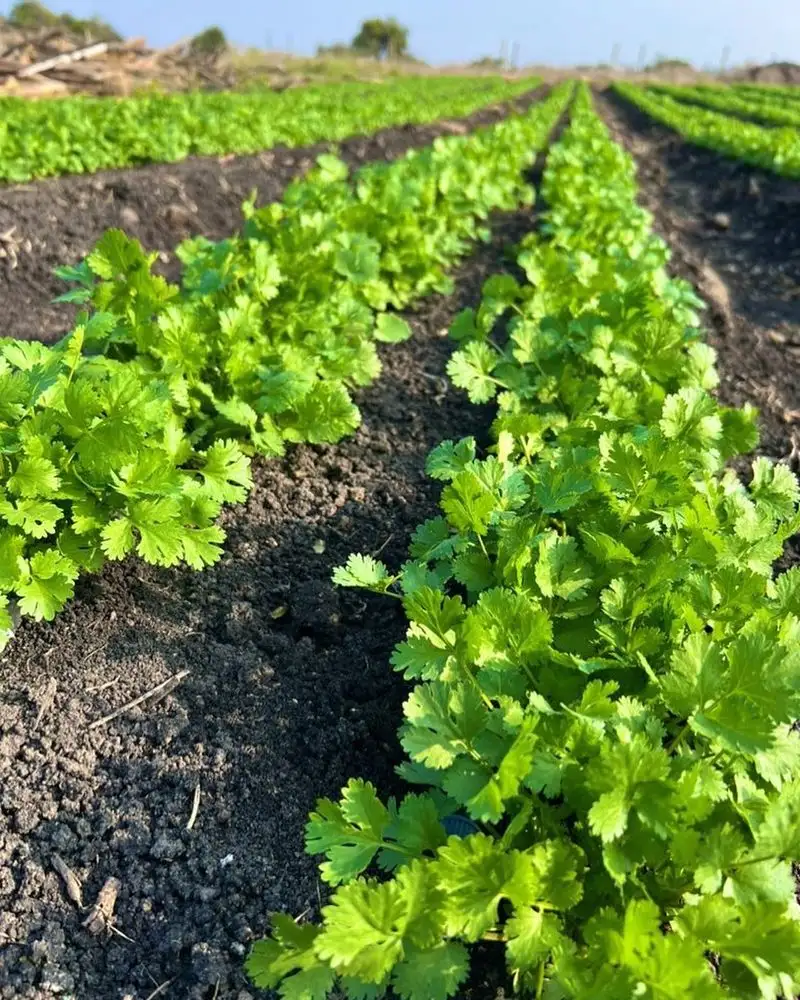
Coriander, more commonly known as cilantro, is cherished for its aromatic leaves, but its small white flowers are a bee’s delight. This annual herb, native to regions from southern Europe to northern Africa and southwestern Asia, thrives in well-drained soil and partial to full sun. Beyond its culinary uses, coriander adds ecological value by attracting pollinators. Its seeds, known as coriander, are a staple in spice collections. Easy to grow, coriander re-seeds itself, ensuring a continuous cycle of life and flavor in your garden.
Heather
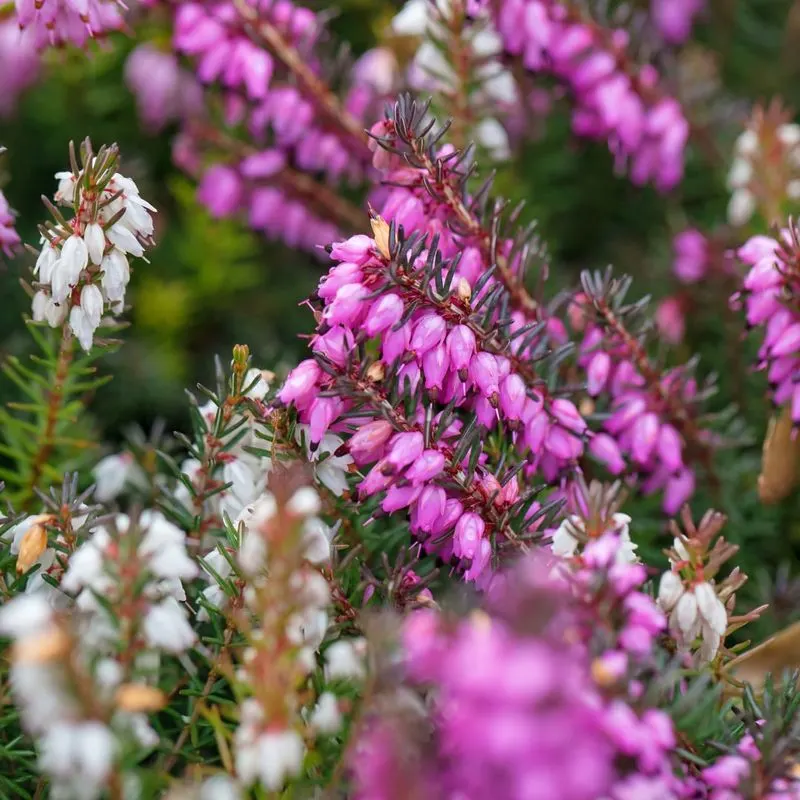
Heather blankets landscapes with its dense, colorful blooms, transforming gardens into a tapestry of pinks, purples, and whites. This evergreen shrub thrives in acidic, well-drained soil and sunny spots. A favorite among bees, heather ensures a lively garden buzzing with activity. Its hardy nature makes it a reliable choice for year-round color, even in harsher climates. Beyond its beauty, heather has historical significance in Scottish traditions, symbolizing good luck and protection. It’s an enduring, vibrant choice for those looking to enhance their garden’s allure.
Snapdragon
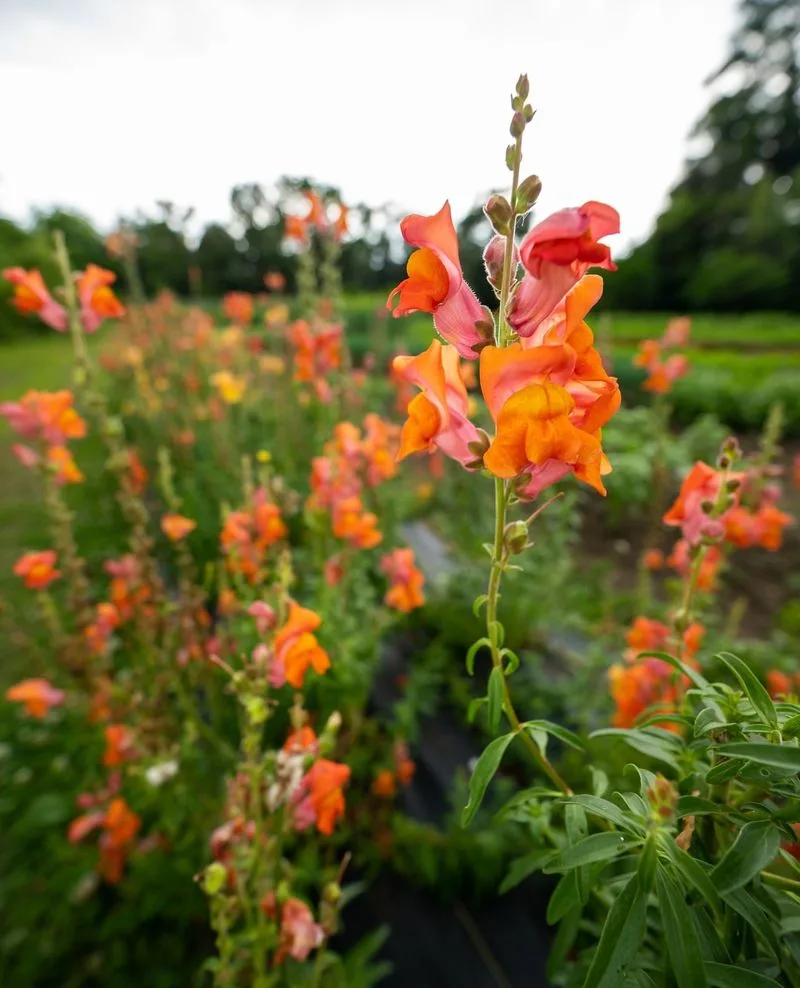
Snapdragons bring a playful touch to gardens with their colorful, dragon-shaped blooms. These annuals are a favorite snack for bees, offering both nectar and charm. Native to the Mediterranean, snapdragons thrive in full sun and well-drained soil. Their vibrant colors range from soft pastels to bold reds and oranges, making them a versatile addition to any garden. Despite their whimsical appearance, snapdragons are relatively easy to care for, blooming from spring until the first frost. Their unique shape and bee-friendly nature make them a delightful garden feature.
Alyssum
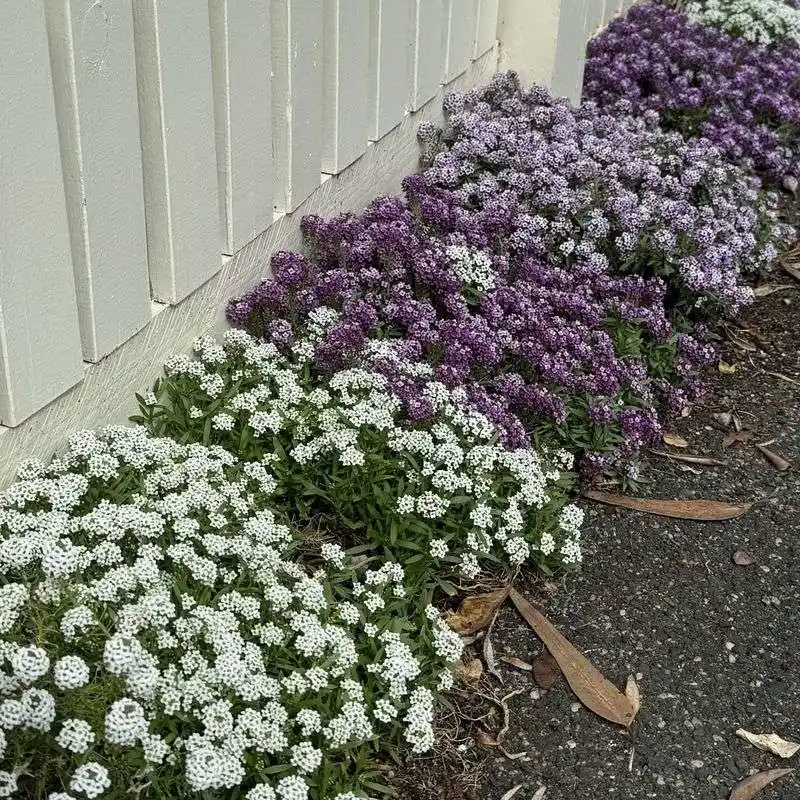
Alyssum graces gardens with its delicate clusters of tiny white and purple flowers. These low-growing plants are not only visually appealing but also irresistible to bees. Originating from the Mediterranean region, they prefer sunny spots with well-drained soil. Alyssum is known for its sweet fragrance, which enhances its allure to pollinators. Easy to grow and maintain, it works well as a border plant or in containers. Its cheerful blooms and ability to attract beneficial insects make alyssum an essential component of a vibrant garden.
Foxglove
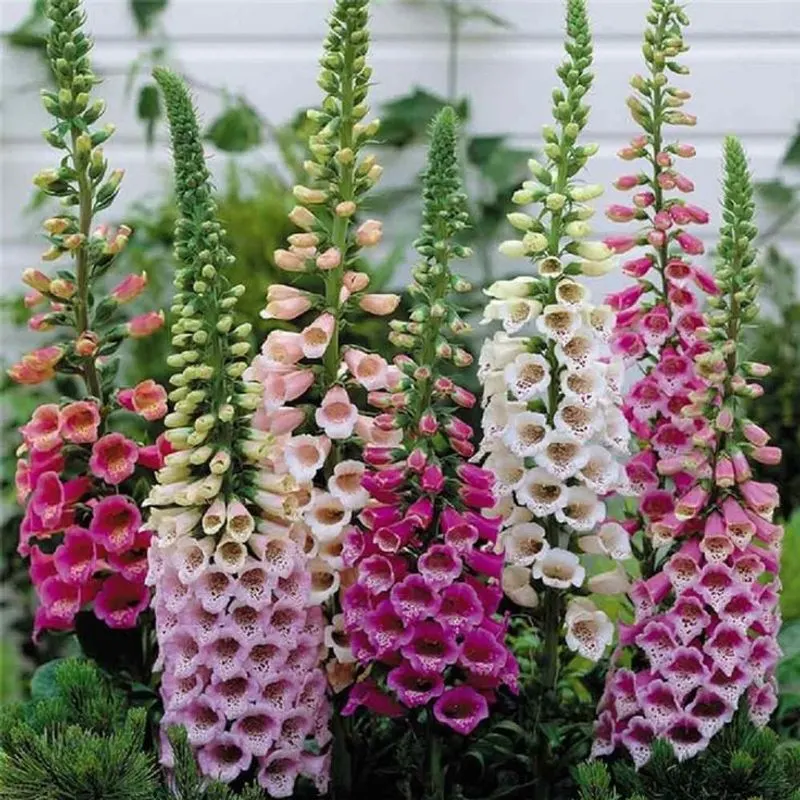
Foxglove stands tall in woodland gardens, with its striking spikes of tubular flowers that captivate both the human eye and garden bees. Native to Europe, this biennial thrives in partial shade and well-drained soil, adding height and texture to garden beds. Despite its beauty, it’s important to handle with care, as all parts of the plant are toxic if ingested. Foxglove’s charm lies in its dramatic presence and its ability to attract and support pollinators. An enchanting choice for those seeking to add vertical interest and biodiversity.

